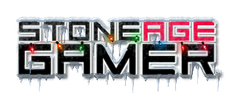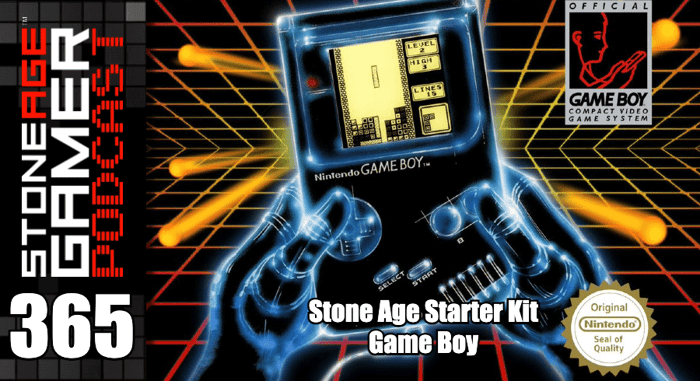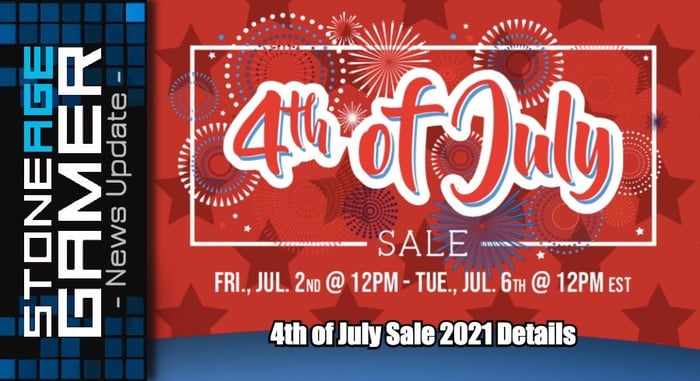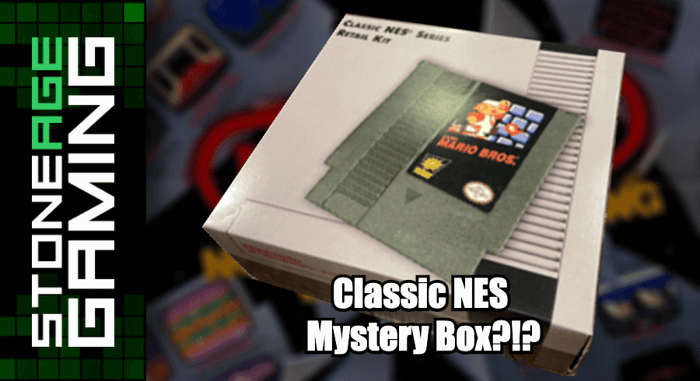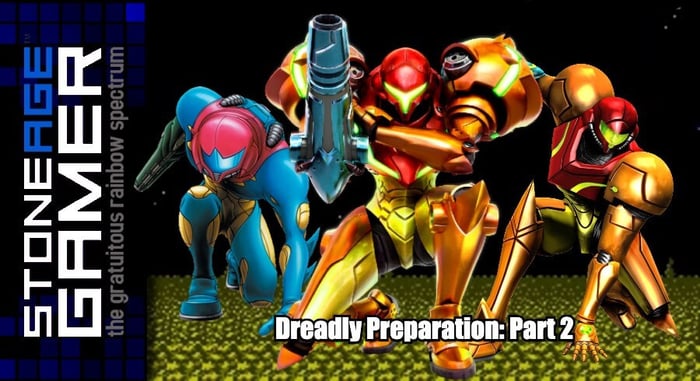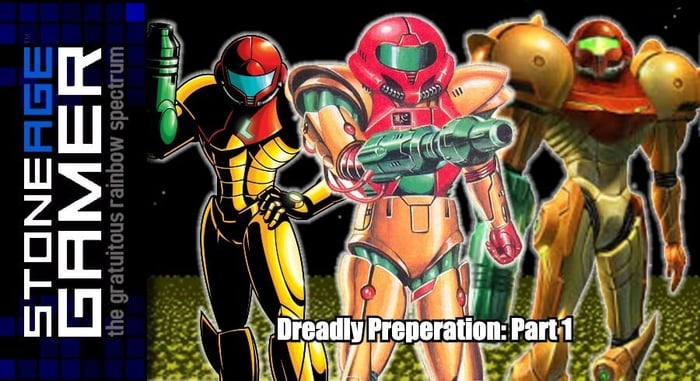
Dreadly Preparation: Part 1
Let's Get Ready for Dread
So, you saw the Metroid Dread trailer and thought to yourself “You know, maybe it’s time I tried out one of them there Metroid games.” That sentiment seems to be going around a lot these days, and that’s great! Metroid has always been one of Nintendo's highest quality franchises, but it’s never really managed to gain the same foothold as Zelda or Mario. Those winds seem to be changing with Dread’s potential popularity being at an all time high, but the franchise has also been around since 1986, so there’s some history there.
Now, Nintendo says that you don’t NEED to have played the previous games in the franchise because the game supposedly explains itself pretty well. That said, a little history couldn’t hurt.

So we’re going to go through the entire Metroid franchise in timeline order and rate how important it is to play each one specifically in terms of preparing for Metroid Dread’s October release. We’ll also discuss the best ways to play them, including some relevant links to products we sell right here at Stone Age Gamer.
It’s worth mentioning that to me personally, every single Metroid game is worth your time. Some are better than others to be sure, but even the worst of the worst have enough interesting stuff in them to be worth the trip. But I recognize that I’m a crazy person, and that not everyone wants to dedicate dozens of hours of their time to a mediocre game just because of its historical context. That's where this list comes in. Hopefully it helps.
So let’s get started.
Metroid (NES, 1986)

What is it? This is where it all started, but maybe not necessarily where you should. The thing about the original Metroid is that while it was revolutionary for its time, it’s got some issues that can be a little harder to overlook today. There’s no in-game map of any sort, and a lot of the rooms look the same so it’s very easy to get yourself turned around. It’s also tough as nails, and not always in a fair way.
There are a couple of fun remedies for this though. First and foremost, the game was remade into the brilliant Metroid: Zero Mission for Game Boy Advance, which we’ll talk about in a bit. So you could skip this one entirely and just play the remake, but if you're really keen on seeing what this game has to offer but you don’t have the patience for its obtuse nature, there are tons of passwords you can enter for various abilities. My recommendation would be to enter the NARPAS SWORD code and bring a map up on your tablet or laptop to keep nearby while you play. Then just go through the game without having to worry about the countless cheap deaths.

Metroid tells the story of how Samus Aran, renowned intergalactic Bounty Hunter, came to be hired by the Galactic Federation to travel to Planet Zebes and eliminate Mother Brain and her space pirates. They have captured and gained control of an alien species known as Metroids, space jellyfish that suck the life out of anything they touch, which could spell disaster for civilization as they know it. This is where we first meet the space pirate generals Ridley and Kraid, and get the basics of Samus’s arsenal including the iconic Morph Ball, Screw Attack, Missiles, Ice Beam, and more.
Should you play it? Maybe. It’s still very much worth seeing at the very least, so maybe turn it on and just kind of jump around for a bit? Once it gets its teeth into you it’s a very good game, but all things considered, if you skipped this one completely in favor of Zero Mission, you wouldn’t be missing out too much.
How can you play it? This game is absurdly accessible. There’s obviously the original NES cart, but that can be a bit on the pricey side these days. So if you’re looking to play the game on original hardware, an excellent way to do so would be on the EverDrive N8.
If replicated versions are more your speed, you can always track down a copy of Metroid Fusion for Game Boy Advance, which has the full game as an unlockable, or just the NES Classic Series GBA cart. It was on the Wii Virtual Console, but that’s sadly no longer an option. The Wii U Virtual Console is though, and it’s readily available there. However, NES emulation on the Wii U is bloody awful, so I’d only go that route if it’s your last resort.
A slightly better option would be the 3DS Virtual Console, which is perfectly serviceable if you’re still rocking the 3DS. But probably the best way to play would be on Nintendo Switch Online. With its built-in rewind feature and suspend states, it takes the sting out of the game’s inherent obtuse nature. You can also create yourself a free Japanese account on the Switch and download Famicom Nintendo Switch Online so you can play the original Famicom Disk System version, which has a bunch of different sound effects and some unique sounding music.
Metroid: Zero Mission (Game Boy Advance, 2004)

What is it? Zero Mission is a remake of Metroid for NES. It’s also the gold standard for remakes. This one basically does everything the NES game does, but better. It adds a ton of modern quality of life improvements from decades of game design, and it’s just plain fun. Heck, it even has a whole extra story segment at the end of it exclusive to this release.
Should you play it? Absolutely. This is without a doubt the best way to start off a Metroid journey. Yes, it does change a lot of the iconic imagery which takes a little away from Super Metroid’s remarkable visual cues, but even without those in place Super Metroid is still incredible. Get this game any way you can.
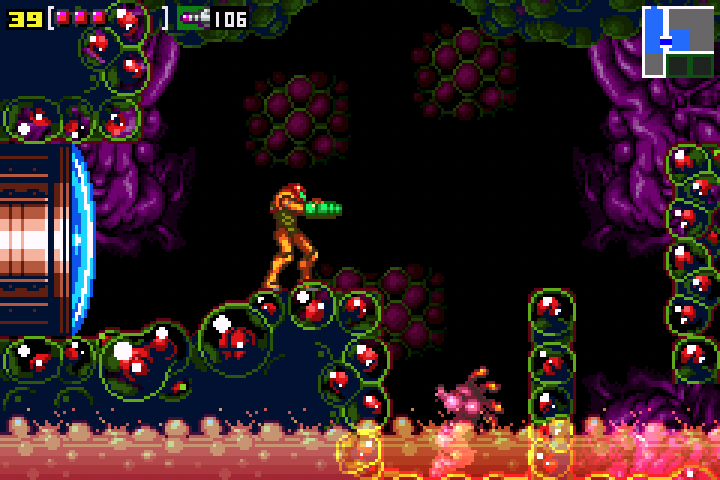
How can you play it? Tracking down this original Game Boy Advance cart has become quite the endeavor. It’s gotten VERY expensive. Thankfully, if you want to play it on an actual Game Boy Advance, or even a Game Boy Player for GameCube, the EverDrive-GBA exists.
As for emulation, Zero Mission was officially released on the Wii U Virtual Console, and it’s a fantastic way to experience the game. It doesn’t suffer at all from being blown up for TV play, and remains one of the best-looking Game Boy Advance games there is. So if you have a Wii U, that’s the place to be. In fact, if you're really serious about Metroid, the Wii U is just about the best Metroid Machine out there.
Metroid Prime (Nintendo GameCube, 2002)
What is it? So, before we get to Metroid II, we have a whole side story to explore first. Metroid Prime is actually the second game in the timeline, and while this whole situation is nowhere near as confusing as something like say, the Wonder Boy series, or even The Legend of Zelda, this is where things get a tiny bit weird. Metroid Prime and all of its own sequels and spinoffs take place between Metroid/Zero Mission and Metroid II: Return of Samus/Samus Returns. Since they’re their own thing, you could skip them entirely if you’re just out to prep for Dread, but you’d be doing yourself a disservice. Not only are these games quite good, but Metroid Prime 4 is on its way too, so taking even a small look in Prime’s direction is recommended.
Following the destruction of Mother Brain, Samus is contracted once again to investigate more space pirate hijinx. Seems they’ve come in contact with an incredibly powerful yet corrosive substance called Phazon, and they’re using it to do all sorts of bad stuff, including breeding super powered Metroids. This takes Samus on a trip through the memorable planet of Tallon IV, where she fights a whole mess of Space Pirates, finds out Ridley survived their last encounter and is now enhanced with cybernetic parts while he regenerates, and faces off against the titular Metroid Prime which once destroyed, merges with Samus’s Phazon power suit (a suit you get in the game that allows you to survive Phazon stuff) and becomes Dark Samus, who you may know from Super Smash Bros. Ultimate.

A quick side note, this is the second time I’ve mentioned Ridley (who you may also know from Smash Bros.) and that’s because he’s a pretty pivotal character in Samus’s past, even though it’s never really explained in the games.
As established in the official Metroid manga, Samus grew up on the planet K-2L with her parents. The major export there was something called Afloraltite, and Samus’s Dad worked in the mines. One day, the space pirates came to K-2L to steal said Afloraltite, and in the process murdered everyone there, including Samus’s parents. Samus survived though, and was rescued by the Chozo, a race of bird people who took her in, infused her with their blood which gave her super strength and durability, and designed her super cool suit. So yeah, Samus hates Ridley.

Anyway, Prime is also the franchise’s first and arguably best foray into 3D. It plays out as a First Person Adventure, and while the controls are a bit weird, they’re completely manageable no matter which iteration of the game you play.
Should you play it? Absolutely. This game probably won’t have much of anything to do with Metroid Dread’s story, but it still does a lot in terms of world building, and it’s also just a spectacular game in its own right. It’s filled with all manner of Chozo lore and stuff, and well, it just rules.
How can you play it? This one can be a bit tricky. It was originally released as a GameCube game, and it isn’t exactly tough or super expensive to track down, especially if you don’t mind buying it loose. However, like I mentioned above, the controls are a bit odd. For all intents and purposes, it’s a first person shooter, but it doesn’t control like one. All movement is handled by the left analog stick, with the right stick relegated to weapon management. It works, but it will frequently leave you wishing that you could look one way and walk another, especially if you’ve spent any time playing other FPS games with more standardized controls.
Your other option comes in the form of the much sought after Metroid Prime Trilogy for Wii. This will obviously work in a Wii or a Wii U, and it includes all three numbered Prime games, but again with slightly weird controls. In my opinion, they’re better than the GameCube ones since they play more like a traditional keyboard and mouse or dual analog setup, but the Wii Remote and Nunchuck combo isn’t for everyone. They had to make some concessions to make it work with a controller with so few buttons too, and while it does work, it will again make you wish you could just play it with a regular controller.
That disc is crazy expensive too, so probably the best option would be in the form of the digital download version of Metroid Prime Trilogy on Wii U. It’s only $20, and it actually runs better than the physical version with a slightly more consistent framerate and drastically reduced loading times.
Metroid Prime: Hunters (Nintendo DS, 2006)
What is it? This one was the original flagship title for the Nintendo DS launch. A demo for the game was included with the initial console release, and it really is an impressive feat to see running on the hardware.
The final game was delayed a bunch though, and ultimately didn’t really do a whole lot. Like Metroid Prime, this is a first person shooter, except it uses stylus controls which work pretty well all things considered. But while it takes place in the Metroid Prime timeline, it doesn’t actually have anything to do with Metroids or Metroid Prime/Dark Samus. It does introduce you to a bunch of other intergalactic Bounty Hunters, which all have pretty cool designs, and none of which are as interested in being good guys as Samus is.

Some sort of big telepathic message was sent out from an unknown location talking about an ultimate weapon for anyone who can figure out where to find it. The Galactic Federation hires Samus to go get it for them, while these other bounty hunters are chasing it for themselves. In the end it was all a trap set by some big space monster to get itself freed from its prison (or something like that, it’s all a bit weird). Samus gets the weapon, saves the day, and destroys it in the prices.
Should you play it? Probably not. It’s not a bad game by any means, but it isn’t exactly a super memorable one, nor does it have any lasting effects on the rest of the franchise as a whole, with the exception of maybe the secret 100% ending in Metroid Prime 3, but even that’s unclear. Unless you’re really out to play every single Metroid game, you can safely skip this one.
How can you play it? Tracking down an original DS cartridge isn’t terribly expensive, though it is slightly more pricey than you might expect considering its level of popularity, even among Metroid fans. Still, playing it on original hardware isn’t too tough, and it obviously works on both the original Nintendo DS or 3DS, one of which you likely have lying around somewhere.
However, the coolest and most interesting way to play it would be on the Wii U Virtual Console. Because of that system’s unique nature, Nintendo DS games were actually released on the eShop for download, and they’re pretty cool. It doesn’t hurt that it also only costs a couple of bucks as opposed to the original cart.
Hunters also contains a lot of small stuff that can be somewhat difficult to follow on the small screen, and the game actually looks pretty decent blown up on a big TV. Kind of like a PS one game. The controls aren’t great though, but that’s the case no matter which platform you’re on. Jumping is mapped to double tapping the screen with the stylus since all other buttons aren’t accessible thanks to the touch screen controls. It once again leaves you wishing someone would just port these games to a system with a regular controller.
Metroid Prime 2: Echoes (Nintendo GameCube, 2004)

What is it? This game is pretty solid overall, but we’re definitely squarely in the territory of games that likely have very little if anything to do with Dread. This time, you travel to the planet Aether which has been hit with Phazon poisoning so hard it’s split into a light and dark dimension. It’s much tougher than the first Metroid Prime, but it also gives us our first proper introduction to Dark Samus, which is pretty darn cool. It's also the first 3D Metroid game to feature the Screw Attack.

Should you play it? Probably not. Like Hunters, there’s an incredibly slim chance any aspect of this game will even be referenced in Dread, but it’s a pretty cool game on its own. If you liked Metroid Prime a whole lot and really want more, this is still a good time, albeit not quite as memorable overall as its predecessor. Still Metroid Prime 4 is eventually coming out, so it might be good to brush up on these games before that one arrives, but for the case of prepping for Metroid Dread, this one can be left alone for now.
How can you play it? This falls in the exact same pool as Metroid Prime. It’s a bit pricier to get the GameCube disc, and if that’s where you want to play you’re going to have to use those wacky single stick controls again. It’s obviously included in the Prime Trilogy, and works the same way as the first game there.
Metroid Prime 3: Corruption (Nintendo Wii, 2007)

What is it? This is another really cool game, but it's unfortunately riddled with unnecessary motion control gimmicks. They don’t break the game, and they’re actually super cool at first, but they get old fast.
This game effectively wraps up the Phazon storyline, and also features Samus working more directly with the Galactic Federation than we’ve seen her do before. She’s in regular contact with a GF Commanding officer, and she’s also working alongside a trio of other bounty hunters who they called in to help Samus take down the space pirates once and for all. It’s a really fun game overall, and it’s got an incredibly cool boss battle with a slightly less cybernetic Ridley that takes place falling down a giant shaft.

Should you play it? Probably not. Like Prime 2, this likely won't have anything at all to do with Dread, so it can safely be skipped for now. Also like Prime 2, it will probably have a LOT to do with Metroid Prime 4, so, you know, be prepared to come back to it someday.
How can you play it? This was a Wii game, so you can go out and get the original disc for relatively inexpensive, and that will work on a Wii or a Wii U. It's also on the Metroid Prime Trilogy, but as we said before, that's a pretty pricey endeavor. Your best option here is to play it on a Wii U with the eShop version of Prime Trilogy. The original version suffers from some pretty nasty load times, which have been greatly reduced in the digital Trilogy version.
We’re going to stop here for now. Check back next week for the rest of the series’ entries, and why you should or shouldn’t play them. In the meantime, there’s no better time than now to give Metroid a chance. Have fun!
